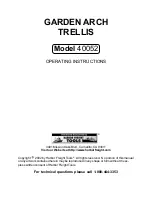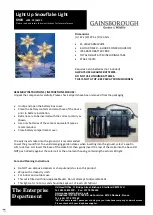
99
CANNON
®
CCS-2100 with VISCPRO
®
Instruction & Operation Manual
Version 2.0a— November, 2010;
CANNON
®
Instrument Company
2139 High Tech Road • State College, PA 16803 • USA
CHAPTER
A
APPENDIX A
—
WEISSENBERG EFFECT
The Weissenberg Effect is the tendency for viscoelastic liquids to flow in
a direction normal to the direction of the applied stress. In the CCS
viscometric cell, the stress is applied through the turning of the rotor
inside the stationary stator. Thus, flow in a direction normal to the
applied stress is in the upward (or downward) direction.
The following text, taken from Viscosity and Flow Measurement, by Van
Wazer, Lyons, Kim and Colwell (Interscience Publishers, 1963), de-
scribes the Weissenberg Effect:
The experimental difficulty arising from the Weissenberg effect is
that, after some lapse of time sufficient materials will have left the
gap so that the original value for the height of the gap cannot be
used. Hence the material must either be confined in the gap or the
measurement of each point must be made rapidly, with the gap being
repacked between points.
Some polymeric solutions are highly viscoelastic, and exhibit the
Weissenberg Effect to a lesser or greater degree, which causes depletion
of the test sample from the shear area of the viscometric cell of the CCS.
For Newtonian and non-viscoelastic solutions, the viscometric cell of the
CCS does not exhibit a tendency for the shear rate to be depleted.
Compensating for the
Weissenberg Effect
The CCS instruments treat all oils in the same manner. In the case of
strongly viscoelastic oils, no provisions are made in either instrument for
special injection or testing procedures.
CANNON
®
Instrument Company is not aware of any strongly viscoelas-
tic oils in the automotive lubricating market. However, such oils are
known to appear in lubricant research programs.
ASTM Method D 2602, which includes comments and procedures for
working with viscoelastic oils, was withdrawn in 1994 and replaced by D
5293. In the new method, Annex A1. Special Procedure for Highly
Viscoelastic Oils describes procedures for running viscoelastic oils but
this procedure is applicable only to the CCS-2B instrument.








































